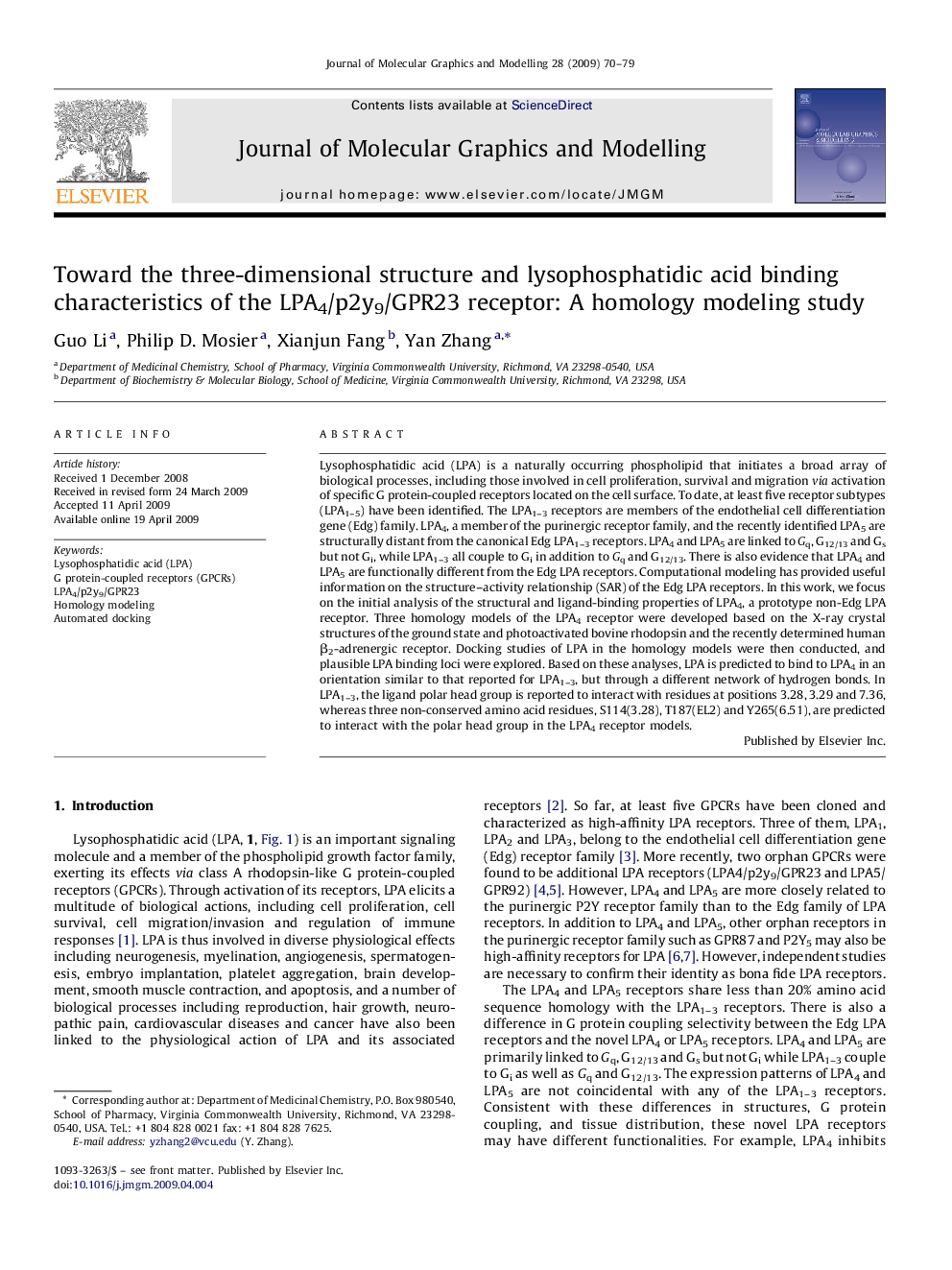| کد مقاله | کد نشریه | سال انتشار | مقاله انگلیسی | نسخه تمام متن |
|---|---|---|---|---|
| 444590 | 693009 | 2009 | 10 صفحه PDF | دانلود رایگان |

Lysophosphatidic acid (LPA) is a naturally occurring phospholipid that initiates a broad array of biological processes, including those involved in cell proliferation, survival and migration via activation of specific G protein-coupled receptors located on the cell surface. To date, at least five receptor subtypes (LPA1–5) have been identified. The LPA1–3 receptors are members of the endothelial cell differentiation gene (Edg) family. LPA4, a member of the purinergic receptor family, and the recently identified LPA5 are structurally distant from the canonical Edg LPA1–3 receptors. LPA4 and LPA5 are linked to Gq, G12/13 and Gs but not Gi, while LPA1–3 all couple to Gi in addition to Gq and G12/13. There is also evidence that LPA4 and LPA5 are functionally different from the Edg LPA receptors. Computational modeling has provided useful information on the structure–activity relationship (SAR) of the Edg LPA receptors. In this work, we focus on the initial analysis of the structural and ligand-binding properties of LPA4, a prototype non-Edg LPA receptor. Three homology models of the LPA4 receptor were developed based on the X-ray crystal structures of the ground state and photoactivated bovine rhodopsin and the recently determined human β2-adrenergic receptor. Docking studies of LPA in the homology models were then conducted, and plausible LPA binding loci were explored. Based on these analyses, LPA is predicted to bind to LPA4 in an orientation similar to that reported for LPA1–3, but through a different network of hydrogen bonds. In LPA1–3, the ligand polar head group is reported to interact with residues at positions 3.28, 3.29 and 7.36, whereas three non-conserved amino acid residues, S114(3.28), T187(EL2) and Y265(6.51), are predicted to interact with the polar head group in the LPA4 receptor models.
Journal: Journal of Molecular Graphics and Modelling - Volume 28, Issue 1, August 2009, Pages 70–79